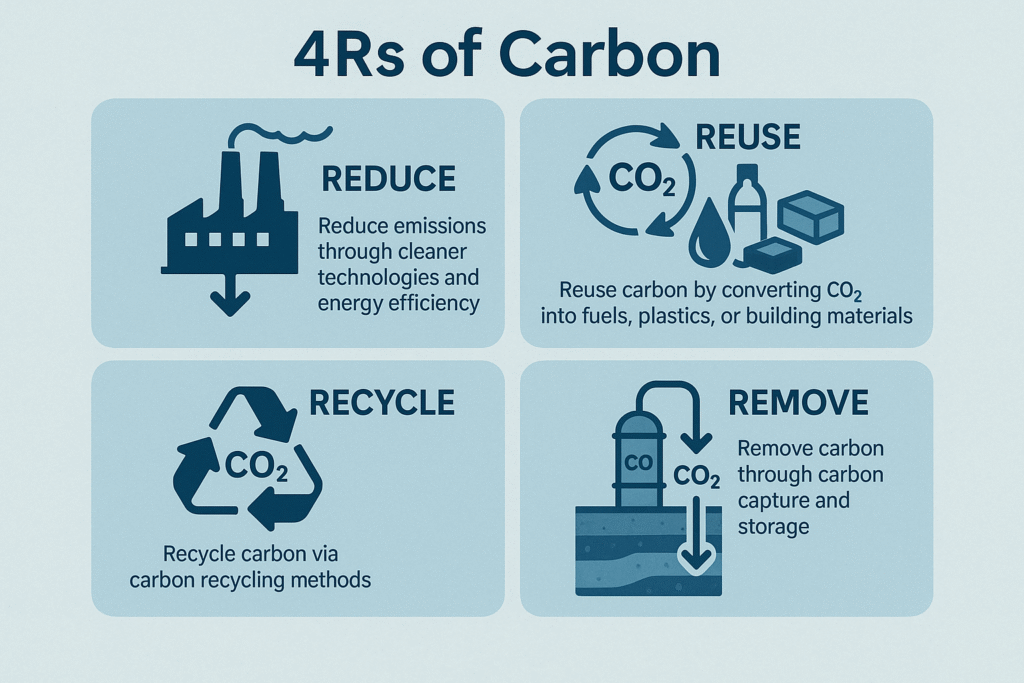As the world struggles with rising greenhouse gas emissions, the need for innovative solutions has never been greater. One concept gaining attention is the circular carbon economy — a framework designed to manage carbon as a resource rather than a waste product. Central to this idea is carbon capture and reuse, which ensures that carbon dioxide (CO2) is not simply emitted into the atmosphere but instead repurposed for sustainable applications.
What is the Circular Carbon Economy?
The circular carbon economy is modeled after the broader concept of the circular economy, which focuses on reuse, recycling, and reducing waste. Instead of treating CO2 as an unavoidable byproduct of industrial activities, this model emphasizes capturing, storing, and reusing carbon to close the loop.
It operates on four key principles often summarized as the “4Rs of carbon”:
- Reduce emissions through cleaner technologies and energy efficiency.
- Reuse carbon by converting CO2 into fuels, plastics, or building materials.
- Recycle carbon via carbon recycling methods.
- Remove carbon through carbon capture and storage.

Carbon Capture and Reuse Explained
Carbon capture and reuse goes beyond simply trapping emissions. After CO2 is captured from industrial plants, power stations, or even directly from the air, it can be transformed into valuable products. For example:
- Converting CO2 into synthetic fuels that can power vehicles.
- Using CO2 in building materials like cement and concrete.
- Employing CO2 reuse technologies in the chemical industry to produce fertilizers or plastics.
This approach aligns with sustainable carbon management because it prevents CO2 from contributing to global warming while creating new revenue streams for businesses.
Why the Circular Carbon Economy Matters
The importance of the circular carbon economy lies in its potential to accelerate the journey to carbon neutrality. Unlike traditional carbon reduction strategies that only focus on cutting emissions, this model seeks to give carbon a second life.
Key benefits include:
- Carbon footprint reduction across industries.
- Support for climate change solutions and net zero future goals.
- Promotion of decarbonization strategies that integrate with renewable energy and carbon technologies.
- Stimulation of innovation in carbon-to-value technologies.
Challenges and Future Outlook
While the concept is promising, challenges remain:
- High costs of carbon capture methods.
- Need for large-scale infrastructure to support closed-loop carbon economy systems.
- Policy frameworks and incentives must encourage industries to adopt these practices.
Despite these barriers, progress in industrial carbon reuse and decarbonization strategies shows that the circular carbon economy could soon play a critical role in global sustainability efforts.
Conclusion
The circular carbon economy represents a shift in how we view emissions — not as waste but as a resource. With advancements in carbon capture and reuse, industries can contribute to carbon footprint reduction while driving innovation in clean technologies. Adopting this model is more than an environmental choice; it’s a step toward a net zero future where carbon becomes part of the solution to climate change rather than the problem.


